Pompeii, Campania, Italy 1/2014
Heading south from Rome we were basically looking for a nice place to spend Gary’s birthday. The ancient city of Pompeii had always been on our list of areas to visit. Monika had been there with her parents many years ago and had fond memories.
Pompeii rises on a plateau of Vesuvius’ lava overlooking the Sarno River Valley at whose mouth was once a busy port. Its origins date back to the 1st half of the 16th century BC. In 62 A.D. a violent earthquake virtually leveled the city. Seventeen years later, still in the process of rebuilding the earthquake damage, Vesuvius erupted on 24 August 79 A.D. and buried Pompeii under ash and rock. It was not rediscovered until the 16th century.
The archaeological area of Pompeii extends for approximately 163 acres of which approximately 111 have been excavated. It is quite amazing what they have uncovered. As we walked the streets in the early morning without the crowds of tourists, it was like strolling through a deserted ghost town. We could see were elegant homes once stood. We ducked under archways and poked around inside public baths. On many walls we marveled at the beautiful frescoes. Intricately designed brick walls and mosaic floors showed the artistic abilities of the original citizens. There were bakeries, fast-food restaurants, fountains and even a couple of houses of ill repute. The open-air great theater could seat 5000 spectators.
In the abandoned granary now used as a warehouse for artifacts, we grimaced at the plaster molds of victims who obviously died horrible and painful deaths.
For a little impression of what Pompeii is all about, scroll through the photos below. They may tell part of the story but much will never be known.
- And you thought crosswalks are a modern invention?
- Monika leaps over the stepping-stones across the unique cobblestone streets of Pompeii, reliving a childhood memory when she visited Pompeii with her parents.
- After hundreds of years of traffic we could clearly see the deep ruts in the stone cobblestone streets from the wheels of carts and chariots.
- There were several memorial arches that had survived the eruption and the previous earthquakes. Some were entrances to the city.
- Following extensive excavation, the foundations and walls of many of the homes and shops had been uncovered.
- Many of the building walls showed the artistic talents of the builders making an effort for beauty in addition to the basic structure.
- This small theater was located next to the great theater (built in the 2nd century BC) which could hold approx. 5000 spectators. Works performed here likely included those of Atellanae, Plautus and Terentius. If you don’t recognize those names don’t worry. We didn’t either.
- Remnants of this building called the Basilica constructed during the 2nd half of the 2nd century BC had survived. It was dedicated to administering justice of business negotiations.
- This was one of several bakeries in town. The unique mill stones were a style we had never seen before. Grain was poured into the top of the conical stone as a mule turned it.
- Eating lunch on the run was popular in Pompeii. This might have been the forerunner of a McDonald’s, with warm food held in pots for passerbies to stop for a quick snack or a warm bowl of soup.
- Fountains throughout the city were a source of water for drinking and washing.
- Relief sculptures like the one on this wall had easily survived the heat of the eruption.
- Beautiful frescoes adorning the walls of homes and public baths had amazingly survived, many still retaining their brilliant colors.
- Citizens of Pompeii obviously placed a great deal of importance on the artistic value of public buildings.
- The double layered walls of one of the public baths showed how the room had been heated with warm air from an outside source.
- Few statues in the city remain, perhaps stolen or carted off to museums in Naples. These two replicas on either side of the portico were of Godess Diana and her twin brother Apollo depicted as archer.
- The granary was built in 62 AD. Today it is used to store various archaeological materials excavated from Pompeii including many beautiful amphorae and a few plaster casts of victims.
- This man appears to be praying.
- This poor dog clearly did not have a happy death.
- Some victims may have died instantly from the blast of heat following the eruption. Others may have suffered horrible pain and fear.
- At the entrance to The House of the Tragic Poet we saw the famous mosaic of a chained dog with the message CAVE CANEN”, (beware of dog).
- Intricate mosaics were often part of the entrances to nicer homes.
- We could only imagine the luxury lives of some of the more wealthy residents of Pompeii.
- There were several houses of prostitution in town. On the walls there were graphic pictures explaining various techniques for those who needed instruction.
- Yes, there were actually toilets, this one was located in the house of prostitution.
- We could presume that beds like this in one of the houses of prostitution had mattresses.
- Always, looming in the distance, Mount Vesuvius was a threatening image as it waits for its next eruption that will surely happen, perhaps even in our lifetime.
- To be certain, visiting Pompeii made a memorable place to spend one’s birthday.



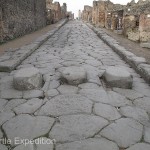
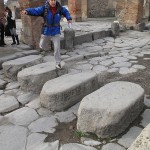
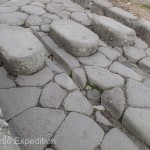
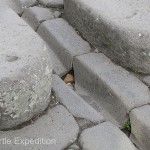
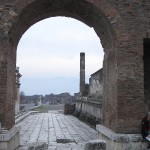
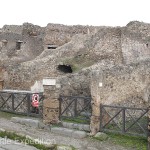
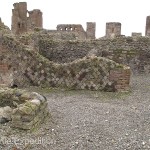
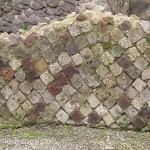
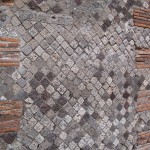
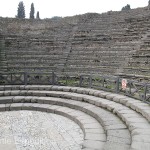
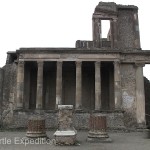
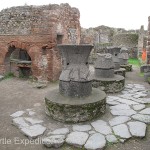
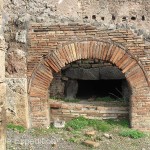
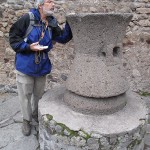
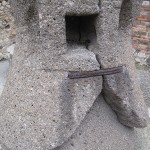
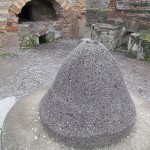
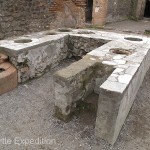
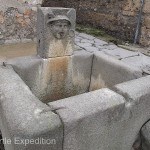
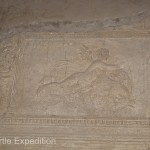
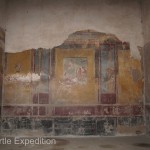
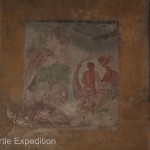
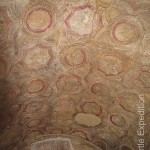
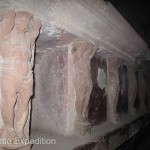
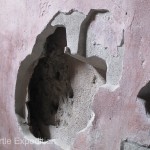
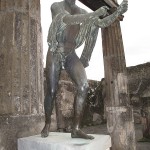
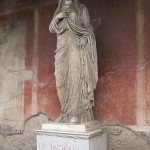
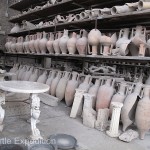
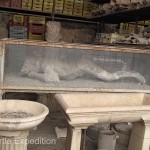
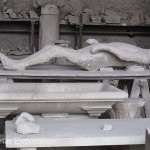
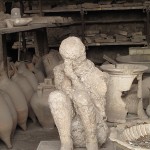
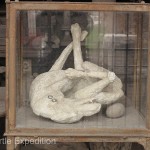
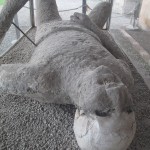
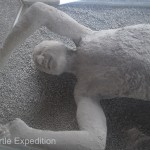
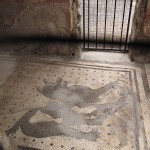
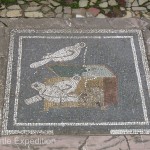
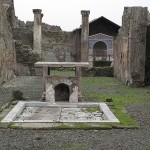
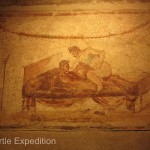
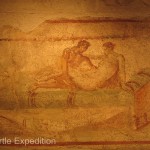
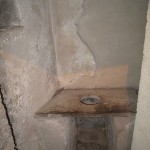
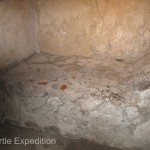
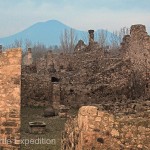
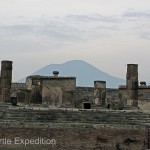
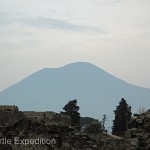
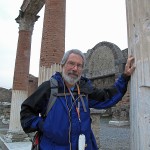





Heading south from Rome we were basically looking for a nice place to spend Gary’s birthday. The ancient city of… http://t.co/g9igBmYCzq